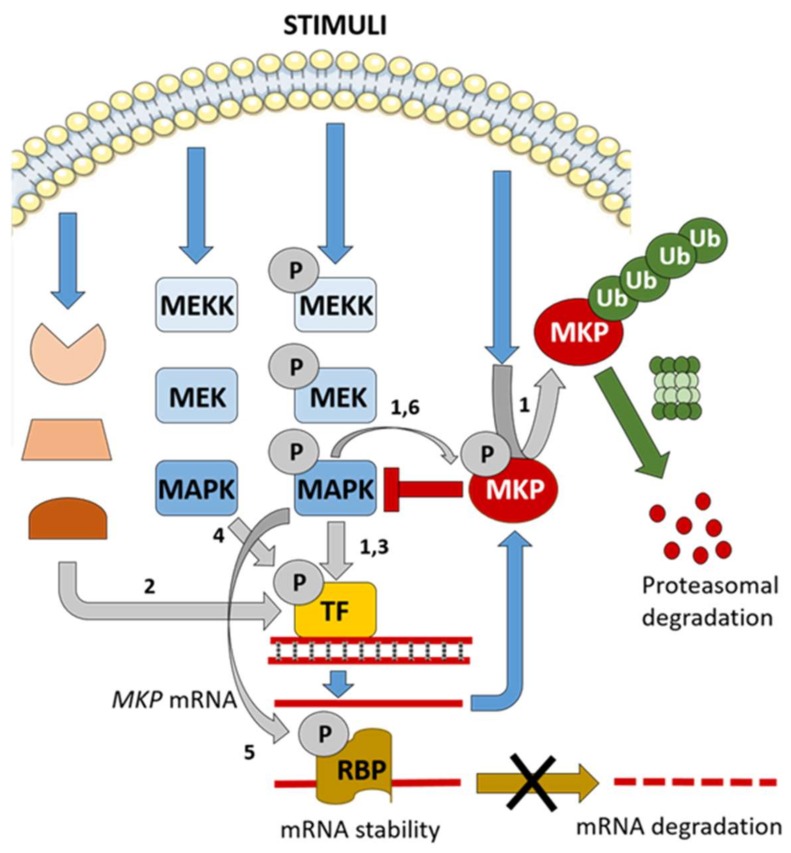Figure 4.
Multiple levels of MKP regulation in fungi. In response to stress, MKP gene expression can be transcriptionally induced by a transcription factor (TF) activated by either the MAPK target of the MKP, another related MAPK pathway, or another route. The stability of the MKP mRNA can be post-transcriptionally regulated by an RNA-binding protein (RBP), which increases the mRNA half-life and thereby the amount of MKP protein. The activity of the RBP can be in turn modulated by phosphorylation by the target MAPK. After translation, the MKP can be further regulated by different post-translational modifications, such as phosphorylation or ubiquitination. MKP phosphorylation is usually exerted by its target MAPK and ubiquitination generally leads to MKP degradation by the proteasome. Numbers designate the fungal MKPs known to be under the regulatory mechanisms indicated by grey arrows: (1) S. cerevisiae Msg5, (2) S. cerevisiae Sdp1, (3) U. maydis Rok1, (4) C. albicans Cpp1, (5) S. pombe Pmp1, and (6) P. oryzae Pmp1.

